Rolleiflex SL66 for 120 size (5.5x5.5 cm) film

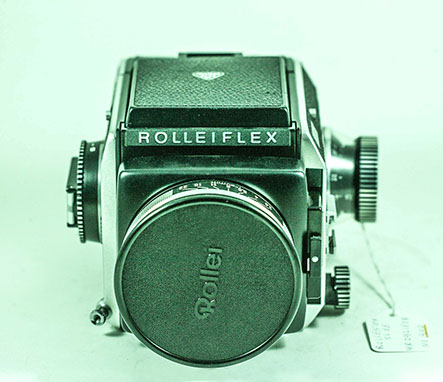


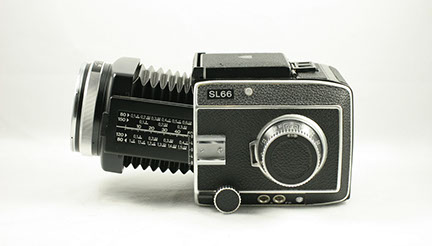
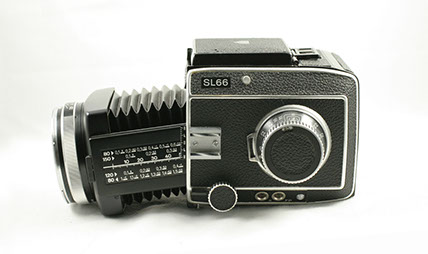
Rollei's tilt capability is unique to this camera. This design utilized a slightly tilted spiral focusing cam that allowed focusing at any position.

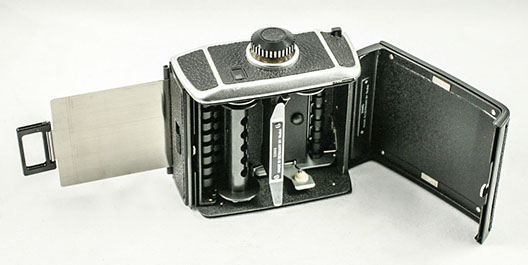
The magazine in Rollei SL66 is loaded with film insert (right). The tilted focusing knob (left) turns a continuous spiral cam to drive the focusing gear. The tilt center is located below the focusing knob so the focusing action may continue even during tilts. The tilt function provides extreme depth of field in situations like photographing a railroad track.
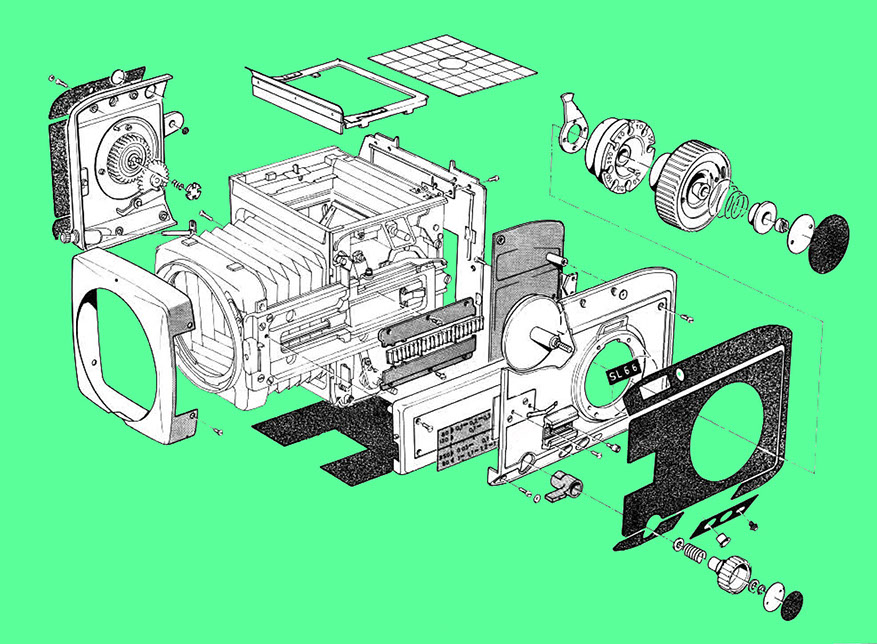
Focusing
Knob
Tilt Lock Lever
Above, Rolei SL6 dissembled to reveal the focusing knob, focus rack and pinion, bellows assembly, and tilt locking knob. Below, back view of the camera revealing its cloth focal plane shutter, and shutter cocking assembly. Note use of rollers to guide its shutter curtain at the base of the camera. Rollei's shutter speed dial is behind the advance lever, and it engages with the shutter mechanism shown in gray.
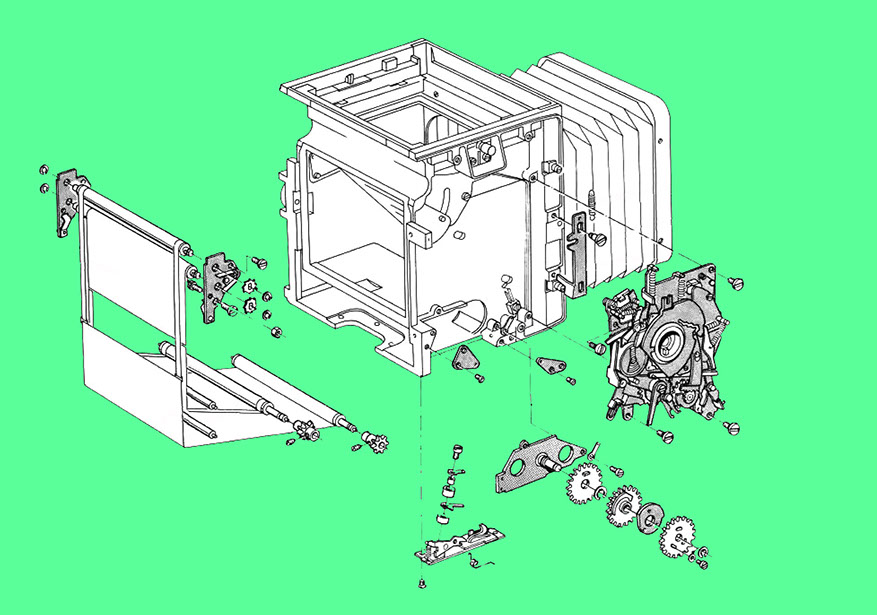
Shutter Control
Mechanism
